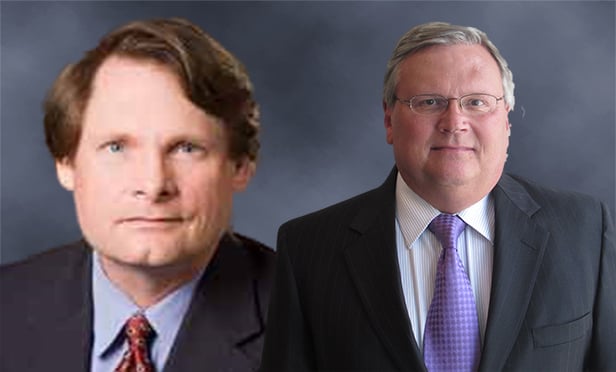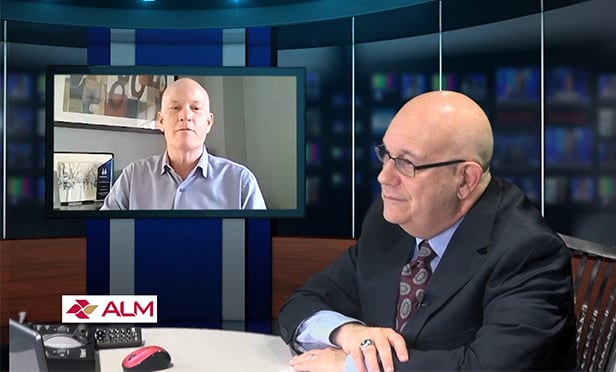GlobeSt.com: What percentage of energy costs is taken up by lighting?
Harwood: Lighting energy can range from 20% to 40% of overall energy costs. It really does depend--in malls, we've seen it go higher because of the intensity of the lighting burden.
GlobeSt.com: So you can save energy replacing lamps with energy-efficient models or dimming lights?
Harwood: The [first perception] is that using energy-saving lamps will reduce energy costs and maintain the light levels you're used to. The other perception is that you can simply reduce the amount of light fixtures you're using, whether incandescent or quartz lighting, or supplement that to the degree possible with fluorescent lighting, which generally is four times more efficient than quartz lamps. The new notion is that you can use LED lights to replace the fluorescent and save even more money. But that notion is false.
GlobeSt.com: Why?
Harwood: Generally when LEDs become enclosed in what we think of as bulbs, they are not as efficient as they portend. Generally, a raw commercial LED that becomes enclosed in some kind of screw-in retrofit as a raw lamp could be from 40 lumens per watt to 100 lumens per watt. However, coupled together to produce enough light to replace, conceptually, a quartz bulb, they produce significant heat. In order to reduce the heat, the manufacturers give them a little less electricity, and in so doing, reduce the light output of each. It would be rare to find a retrofit lamp that would be a one-to-one replacement to a quartz lamp or a compact fluorescent.
GlobeSt.com: So must we get used to a darker environment?
Harwood: The idea that LED just replaces all this scares me. It's an unschooled effort to save energy. It's not that the intent is wrong, it's that it's unschooled. The practical applications of using LEDs to replace what are used now have not been researched enough by professionals. While the retrofit lamp manufacturers and LED producers endeavor to provide something that's useful, they are not application or design engineers. They say, "Well, we've figured out how to put these LEDs into some sort of lamp you will recognize." They screw a base on it like a normal lightbulb or pins on it like an MR16 quartz, and [say] it should replace what you have. They rarely actually say this produces the same amount of light you're replacing.
We have already set out on a path nationally to begin the process of replacing fluorescent lamps, compact fluorescent lamps and quartz lamps with LEDs in such a way that the practical application has not been studied sufficiently. The result has been at least twofold: there appears to be less light in the space and, second, the light you're seeing seems to us to be unfriendly in terms of the color.
This is not to say that I have anything against the LED light source, nor anything against continued experiments, or anything against the idea that LEDs currently have a place in the retail market, the hall market, the office market. It's just that we're not taking the source for what it's best at.
GlobeSt.com: What is that?
Harwood: What I call near-field lighting, short distances [such as] under-counter lighting in the home. They're fabulous for close-proximity lighting to merchandise, in low-ceiling applications, in highly focused lamp replacements. … These replacement LEDs might save 50% of the energy. There are those places, but it isn't easy.
GlobeSt.com: Are there other uses for LEDs to achieve cost efficiency?
Harwood: LEDs are not ready as an ambient light source. They may be in a year or two or three, but currently there is no payback for general office use, general retail use, as an ambient light source. However, there is always a sign or painting on a wall, always retail merchandise that must be displayed. In those applications, accent lighting is a terrific application for LEDs when judiciously and cautiously used.
Then you have a specialty lighting category--cove lighting, that points up to a ceiling. Traditionally, all cove lighting has been done with neon or incandescent, fuse-like bulbs called bayonet lamps. Those light sources generally have an efficiency of 10 or 15 lumens per watt. A neon or fluorescent source may have an efficiency of 30 to 80 lumens per watt, [respectively]. So one would think it would be pretty hard to beat fluorescent cove lighting over the neon.
However, a fluorescent light typically produces more light than you need to define a cove. If your goal is to do a decorative cove lighting application, LEDs play a significant role in energy reduction. They have efficiencies that range from 40 to 80 lumens per watt, so they get close to the efficiency of a fluorescent in these applications, but they can be modulated in the sense of how many LEDs per foot you're using. It would not be unusual for a designer to use four 1-watt LEDs in a foot, so you'd literally have 4 watts in a foot of energy. Multiply 4 watts by four feet, you'd have 16 watts. A fluorescent tube would have 28 to 32 watts. As long as you don't need a tremendous amount of light to define your cove, the LED becomes the absolute winner for the cove lighting application. This is not an insignificant application in the worlds of retail, office, casino and hotel lighting. I would estimate in a project like CityCenter, there are 10 miles of cove lighting. That's over 50,000 feet. And that becomes one factor in a project like a CityCenter, which must be highly visible, still maintaining energy efficiency and LEED certification.
The real near-term goal for a lighting design firm who is interested in providing LEED certification on the lighting side is to work with interior designers and architects in earlier conceptual design. In many cases you can reduce ceiling heights, use less light to illuminate it or put that light closer in the coves and still have that same sense of bright space. In working with a lighting designer who understands the applications and architect in collaboration, we're literally going to be able to collaborate to provide spaces where the lighting energy is reduced, and in reducing lighting energy, reducing the cooling load. There's a double benefit.
GlobeSt.com: Are new technologies on the horizon?
Harwood: A lot of applications are out there in the physics labs and lighting labs. Some of them have to do with using organic compounds to create the LEDs, [others] with creating high-frequency energy supplies similar to high-frequency radio beams, exciting particles within a lamp. We've seen efficiencies that are double what is currently on the market.
GlobeSt.com: How far away is it?
Harwood: We can hope for a five-year horizon on energy savings that would be between 40% and 60% better than we have now. I'm a little loath to predict what happens because we aren't seeing our Federal government investing first, highly and aggressively into lighting technology in the form of grants. It's out there, I bless what they have made available, but they're aggressively pursuing [government] buildings and highway roadway lighting in advance of the technology being ready for that application.
GlobeSt.com: Then why invest in anything now?
Harwood: Let's say the Federal government is assisting you in the retrofit process. Some states are using Federal money and some of their own money, some utilities are providing some money…While, there's literally hundreds of millions of dollars being offered by the Federal Government to use LED lamps to replace the current light source, I'd like to see a better portion of that money spent on research.
GlobeSt.com: Do any codes ban a simple substitution?
Harwood: Yes. There are codes that say every fixture must be tested and rated by a testing authority like underwriters for the lamp that's labeled. There are no labels on all of the recessed lights that are in current use that say they have been tested for an LED lamp of any kind. Therefore, using replacement LED light bulbs is a violation of a building code that says all lighting must be tested by an approved testing authority. There are no fixture manufacturers who will guarantee. It violates the warranty if you put a replacement lamp in.
GlobeSt.com: But it is possible now to achieve your goals aesthetically while saving energy?
Harwood: Absolutely. We had the The Taubman Co. in a week ago to ask the same questions: How can we use LED, how can we save energy? We clearly were able to identify where they could replace neon and incandescent cove lighting with LEDs and get a reasonable payback with the cost of the energy and reduction of heat. For the most part, we could guarantee the payback and they were thrilled. They asked about the recessed lights, where you have mercury, metal halide and compact fluorescents, and we said, "Stay in touch." We keep experimenting with what is sent to us, and there will come a time when it is a useful tool for us, but right now they're not ready.
Want to continue reading?
Become a Free ALM Digital Reader.
Once you are an ALM Digital Member, you’ll receive:
- Breaking commercial real estate news and analysis, on-site and via our newsletters and custom alerts
- Educational webcasts, white papers, and ebooks from industry thought leaders
- Critical coverage of the property casualty insurance and financial advisory markets on our other ALM sites, PropertyCasualty360 and ThinkAdvisor
Already have an account? Sign In Now
*May exclude premium content© 2024 ALM Global, LLC, All Rights Reserved. Request academic re-use from www.copyright.com. All other uses, submit a request to [email protected]. For more information visit Asset & Logo Licensing.








